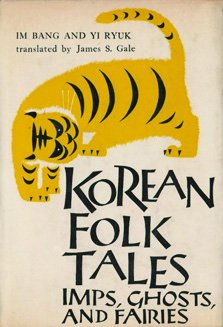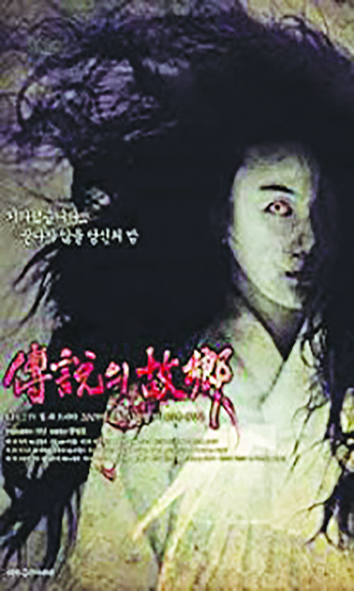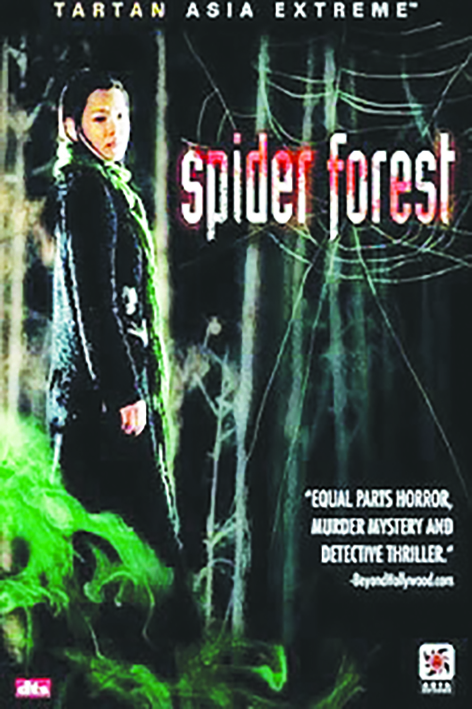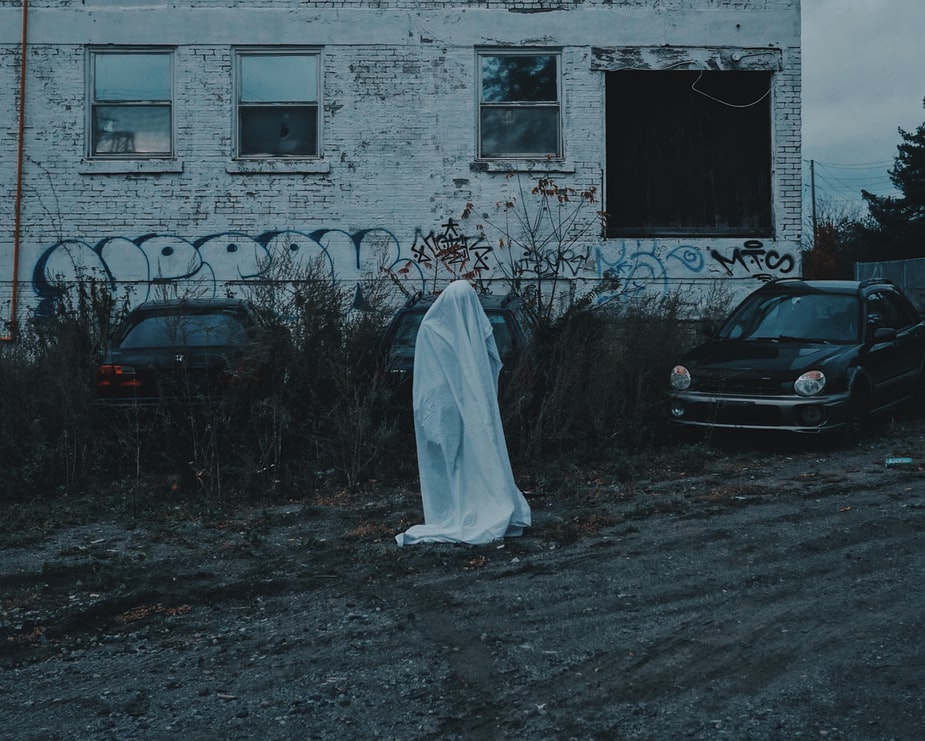Korean Ghost Movies
Written by Regis Olry.
The Origins and Concept of Ghosts in Korea
Korean ghost stories are firmly rooted in oral tradition and ancient literature.[1] In the Tales of the Extraordinary (Sui chŏn), a compilation of Korean Buddhist tales and popular fables initiated by Ch’oe Chi-wŏn (857–900) during the Unified Silla Period, we can read the following story: A poet lived through a one-night love affair with two young women near a grave. But both disappeared at dawn, and the poet understood they were the ghosts of the women who had been buried in this grave.
In a fifteenth century novel of Sŏng Hyŏn (1439–1504), a maid committed suicide in order to come back in the form of a ghost and meet up with the man she secretly married. Cho Su-sam (1762–1849), in a poem written in the 1810s, mentioned “the unappeased ghosts threatening the peace.” In 1913, the historian James Scarth Gale (1863–1937) made available an English compilation of Korean folk tales by scholars Bang Im (b. 1640) and Ryuk Yi (mid-15th century) (Fig. 1).[2]

Forty years later, American writer Eleanore Myers Jewett (1890–1967) published another collection of Korean ghost stories wonderfully illustrated by Japanese artist Yashima Tarō (1908–1994) (Fig. 2).[3] Present-day literature is not outdone: Ghosts keep on lurking somewhere in many 21st century novels, such as Hwang Sok-yong’s 2008 Evening Star (Kaebapparagi pyôl) or Shin Kyung-sook’s 2011 Please Look After Mom (Ommarŭl putakhe), among many others.

The history of Korea over the centuries and the interactions with neighboring countries explain why some Korean ghost tales may obviously be derived from ancestral folklore, however, with some noteworthy differences – a nuance Shin Jee-young calls “hybridisation, not homogenisation.”[4]
For example, the bronze bell of King Seongdeok is believed to have been successfully cast only after a monk had pushed a child into the molten metal.
Now a Chinese tale of the early fifteenth century tells almost exactly the same story, except that the victim is a young girl called Ko-Ngai, and that she was not pushed into the molten metal but threw herself into it to commit suicide.[5] In both tales, the victims became ghosts.
Korean Ghost Movies
In Korea and all neighboring countries, ghosts are seen “as beings that co-exist with the world of the living.”[6]
One can actually touch a ghost, talk with a ghost, eat with a ghost, and even fall in love with a ghost, as can be seen in Hwang In-ho’s 2011 Spellbound (Ossakhan Yeonae) and Oh In-chun’s 2014 Mourning Grave (Sonyeogoedam).
The very first Korean movie to portray a vengeful ghost is The Story of Jang-hwa and Hong-ryeon directed in 1924 by Park Jung-hyun. [7] Kim Jee-woon, among others, drew his inspiration from this story for his 2003 masterpiece A Tale of Two Sisters (Janghwa, Hongryeon).
Of course, Korean ghost movies have common features with other Asian ghost movies. The most evident is the iconic vengeful spirit called wonhon in Korean (Fig. 3), counterpart of the Japanese onryô: a female ghost in a white gown with long dishevelled black hair,[8] as can be seen in Ahn Sang-hoon’s 2006 Arang (Arang). Why dishevelled hair? Because they are known in Asian culture to express “vows of vengeance.”[9]

But they also have some specificities. Firstly, while ghost movies from other Southeast Asian countries lay a certain emphasis on technology (camera in Parkpoom Wongpoom and Banjong Pisanthanakun’s 2004 Shutter, videotape in Nakata Hideo’s 1998 Ringu, phone in Miike Takashi’s 2003 Chakushin-ari, internet in Kurosawa Kiyoshi’s 2001 Cairo), many Korean ghost movies are concerned with “adolescent sensibility,” what Choi Jinhee refers to as “A Cinema of Girlhood.”[10] The famous Whispering Corridors (Yeogo goedam) series is the best example. Secondly, shamanism remains very important in Korean culture;[11] it is therefore not surprising to see shamans involved in the fight against evil spirits, as in gripping Choi Do-hoon’s 2019 TV series Possessed (Bingui).
Thirdly, soundtracks are often taken from masterpieces of classical music: Éric Satie’s Gnossienne No. 1 in Song Il-gon’s 2004 Spider Forest (Geomi sup) and the world-famous O sacrum convivium in Choi Ik-wan’s 2005 Voice (Moksori). Fourthly, the acting of the cast achieves a yet unequaled power and authenticity.
Ghost Movies or Horror Movies?
Should ghost movies be referred to as horror movies? Sometimes yes, but not always. Jeong Beom-sik’s 2018 Gonjiam: Haunted Asylum (Gonjiam) obviously aims to scare spectators (and it works!), which dovetails with the views of Michael Kleinod when he wrote that “the relationship between humans and spirits is less a question of belief than of fear.”[12] But Korean ghosts are much sadder and fuller of suffering than they are frightening and dangerous creatures: The best way to understand what a ghost feels is to watch Song Il-gon’s Spider Forest (Fig. 4), indisputably the most intelligent ghost movie of the 21st century.

Is it still relevant to talk about ghosts in the 21st century? As pointed out by the Californian sociologist Avery F. Gordon: “Haunting is a constituent element of modern social life. It is neither premodern superstition nor individual psychosis; it is a generalizable social phenomenon of great import. To study social life one must confront the ghostly aspect of it.”[13]
References
[1] Cho, D., & Bouchez, D. (2002). Histoire de la littérature coréenne des origines à 1919. Fayard, pp. 96, 201, 249.
[2] Im, B., & Yi, R. (1913). Korean folk tales: Imps, ghosts, and fairies. [Trans. J. S. Gale]. E. P. Dutton.
[3] Jewett, E. M. (1966). Which was witch? Tales of ghosts and magic from Korea. Illustrated by Taro Yashima. New York: The Viking Press.
[4] Shin, Jee-young (2005). Globalization and New Korean Cinema. In: Shin Chi-yun and Julian Stringer (Eds.) New Korean Cinema. Edinburgh: Edinburgh University press, p. 57.
[5] Goodman, Henry (1949). The selected writings of Lafcadio Hearn. New York: The Citadel Press, pp. 89-93.
[6] Richards, A. (2010). Asian horror (p. 15). Kamera Books.
[7] Peirse, A., & Martin, D. (2013). Introduction. In A. Peirse & D. Martin (Eds.), Korean horror cinema (p. 3). Edinburgh University Press.
[8] Lee H. (2013). Family, death, and the wonhon in four films of the 1960s. In A. Peirse & D. Martin (Eds.), Korean horror cinema (pp. 25–34). Edinburgh University Press.
[9] Olivelle, P. (1998). Hair and society: Social significance of hair in south Asian tradition. In A. Hiltebeitel & B. D. Miller (Eds.), Hair: Its power and meaning in Asian culture (pp. 11–49). State University of New York Press.
[10] Choi, J. (2009). A cinema of girlhood: Sonyeo sensibility and the decorative impulse in the Korean horror cinema. In J. Choi & M. Wada-Marciano (Eds.), Horror to the extreme: Changing boundaries in Asian cinema. (pp. 39–56). Hong Kong University Press.
[11] Pettid, M. J. (2009). Shamans, ghosts, and hobgoblins amidst Korean folk customs. SOAS-AKS Working Papers in Korean Studies, 6, 1–13.
[12] Tappe O., Salverda T., Hollington A., Kloss S., & Schneider N. (2016). Global modernities and the (re-)emergence of hosts. Voices, 2, 3. (Global South Studies Center.)
[13] Gordon Avery F. (2008) Ghostly matters. Haunting and the sociological imagination (p. 7). University of Minnesota Press.
THE AUTHOR
Régis Olry, M.D. (France), is professor of anatomy at the University of Quebec at Trois-Rivieres (Canada). In the early 1990s, he worked in Germany with Gunther von Hagens, the inventor of plastination and the BodyWorld exhibitions. He currently studies the concept of Asian ghosts in collaboration with his wife who is a painter (see www.gedupont.com).







